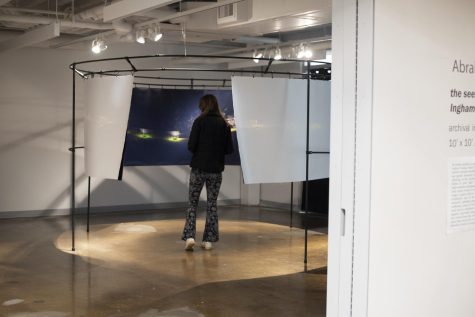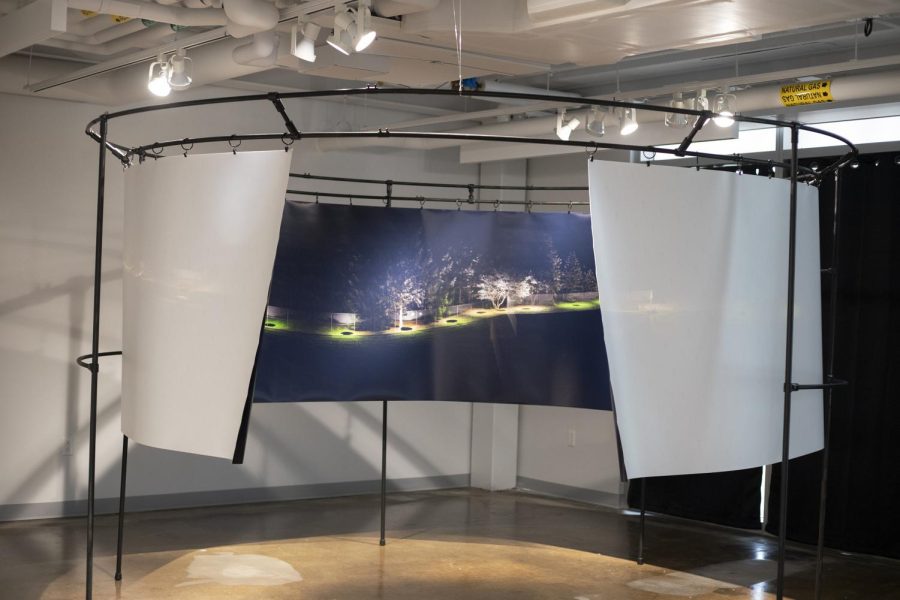Panoramic image attempts to bring thought-provoking ideas to the viewers
The 28.5-foot-long and 44-inch-tall panoramic image, The Seeing Machine as 400,918,794 Points — the View from the Ingham County Youth Detention Center, Lansing, Michigan, is on display until April 22.
April 20, 2022
Several short tin houses are hidden in the dark night. The only clear and obvious image is the circle of iron fences that are lit up by lights. Outside the fences are trees; leaves reach into the fences and cast shadows on the ground.
The scene is a 28.5-foot-long and 44-inch-tall panoramic image that has been on display since April 4 at the Design Innovation Hub and will close on April 22.
The image is titled The Seeing Machine as 400,918,794 Points — the View from the Ingham County Youth Detention Center, Lansing, Michigan.
It was created by Abraham Avnisan, assistant professor of emerging media and technology, and his collaborator, Dan Paz. They started working on the image in fall 2021 and it took them about five and half months to finish.

Avnisan and Paz are trying to bring to the audience a thought-provoking thing. This image critically engages with the prison industrial complex and the ways in which those things are hidden in plain sight within our communities.
Also, the duo invites viewers to think critically about youth incarceration and the school-to-prison pipeline.
“We want viewers to wonder and imagine something that’s often invisible unless you have a direct connection to the prisons system. What might it be like to be locked up as a young person?” Avnisan said. “For those people who do have a direct connection with the system, we want to make them feel that people care.”
The image is hung in an open circle, allowing viewers to step inside the circle and be surrounded by the image.
Viewers can have the illusion of being immersed inside the scene and feel the real perspectives of being in the youth detention center, Avnisan said.
Another special point is that it is a photographic installation and was created by using light detection and ranging scanning technology. The LiDAR technology is a 3D scanning technology that self-driving cars use to see the world around them. The image was created from around 30 scans to give viewers an embodied and sensory experience.
The work premiered in Lansing, Michigan, as part of an exhibition of Paz’s work titled hammer without a nail.
Avnisan will hold a closing reception on April 21 from 5 to 7 p.m. The Kent State community is invited to experience the work and talk with Avnisan. Next, it will be exhibited in Chattanooga, Tennessee and Seattle.
Chong Chen is a reporter. Contact her at [email protected].

























